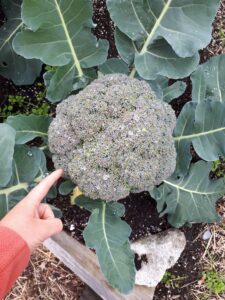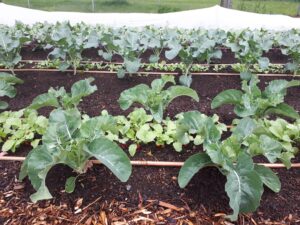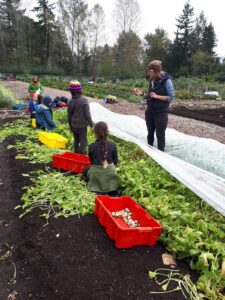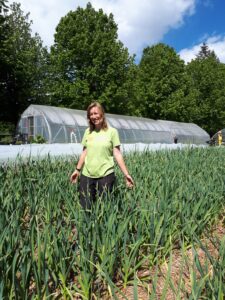“I never thought about where my food came from beyond the grocery store before,” my classmate said to me during our introductory Environmental Studies course in university. Yes, that’s right, university.
When I went on to facilitate garden and food-based experiential education programs, I wasn’t surprised to find a common disconnection between kids and youth from what they ate, its origins, and who grew it. But I’ve also seen the potential for great growth (pun intended) when folks put their hands in the soil and take an active part in their local ecosystems.
April is National Garden Month, and it’s a great time to do just that: start a garden, join a community growing space, or adopt a house plant! There are countless ways to start gardening, and this blog post will focus more on gardening with kids in an educational setting.
I also acknowledge there are often steep barriers to accessing fresh food and growing space, many of which are systemic and prejudice towards race, socioeconomic status, etc. I recommend “A Growing Culture” to dive deeper into this important topic.
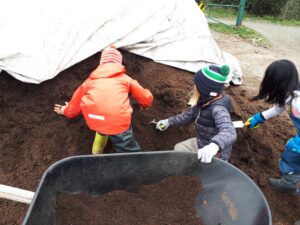 Start Small
Start Small
Even if it means starting indoors with germination testing or potted plant babies, start small! It’s perfectly fine if your growing space isn’t huge. A garden is about observing seasonal and temporal changes and tending to your plants through those shifts. Observing and checking in on new growth is incredibly exciting, no matter what you’re growing or how small the plot. Maybe you won’t be able to involve the entire school just yet, but the place-based process is what matters.
Give It Time
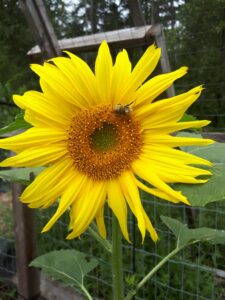 One of the strengths of garden-based learning is there are many tasks involved. Those eager to shovel soil may not be the same as those wanting to carefully plant seeds – perfect! Others may not want to get dirty at all. Over time this often changes, especially as students become more comfortable and familiar with the space. And during harvest time, it’s hard to contain the excitement! I’ve heard many parents comment that their child who won’t stop eating kale in the garden can’t be persuaded to touch it at home (or any other veggie, even if previously unknown – kohlrabi comes to mind here). The novelty of growing food firsthand often lowers barriers for participation throughout the process.
One of the strengths of garden-based learning is there are many tasks involved. Those eager to shovel soil may not be the same as those wanting to carefully plant seeds – perfect! Others may not want to get dirty at all. Over time this often changes, especially as students become more comfortable and familiar with the space. And during harvest time, it’s hard to contain the excitement! I’ve heard many parents comment that their child who won’t stop eating kale in the garden can’t be persuaded to touch it at home (or any other veggie, even if previously unknown – kohlrabi comes to mind here). The novelty of growing food firsthand often lowers barriers for participation throughout the process.
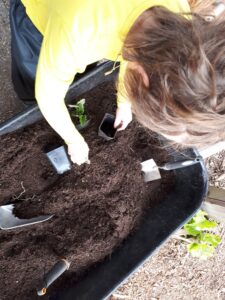
Don’t Expect Perfection
This isn’t your home garden or a highly productive farm, after all. You may have some rules to abide by, especially if your students are gardening within shared community space, but the fact of the matter is that we’re not striving for tidy rows and perfectly pruned tomatoes. Things will be stepped on, planted upside down, and harvested too early/late/not at all. That’s okay! The school garden abounds with emergent learning and teachable moments, which is where the magic, play, and curiosity lies – a plant gone to seed, unwatered sections, a rotten pumpkin… the list goes on.
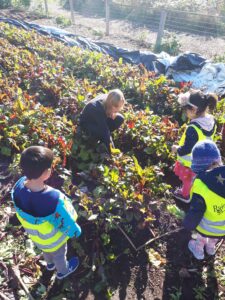
Find What Works and Dream Big
Remember to utilize your local resources and those who may be able to support with time, supplies, or donations. Look for help through garden centres, parents, Master Gardener groups, seed companies, and seed libraries (often in your local library). There are also grants designed for establishing and maintaining educational growing spaces. And in some communities, nonprofits may be running hands-on programs or garden workshops. There’s no end to inspiration out there: whether you want to start a garden-to-cafeteria initiative, establish a school farm, or network with others in your community, be the garden champion you want to see in the world!
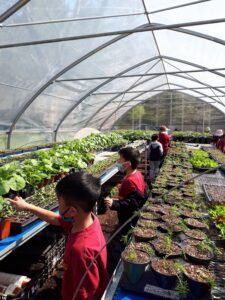
Gardeners young and old have a remarkable chance to tune into their senses and the seasons, feel a sense of pride and ownership over their hard work, and recognize the essential teamwork and problem-solving skills needed to tend a plot. Further, the inevitable losses from unpredictable weather, rodents, pests, and passersby are a reflection of the shared nature within the ecosystem, and what we can and cannot control. Lastly, you’ll find success by involving your learners from the beginning: What do they want to plant? What are their goals? And remember to think beyond produce – consider pollinators, beneficial insects, and herbs as options.
I hope this has provided some inspiration – I’ll list selected resources below, and please feel free to reach out if you want further support. Happy gardening!
 Resources:
Resources:
The School Garden Curriculum
Looking Closely Outdoor Learning Kit
Farm to School BC
School Food Garden Resources
Nourish NS: Grow Eat Learn
Toronto Urban Growers
Room to Play Consulting
Start-up guides: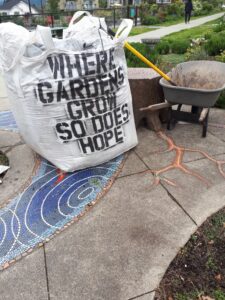
BC Farm to School Guide
School Gardens in Alberta
Vancouver School Board Garden Process
Nova Scotia Department of Agriculture
Region of Durham Guide to School Gardens
Stephanie Korolyk (she/her) is the Program Manager at Take Me Outside and an MEd Interdisciplinary student. She likes finding plants that grow in unlikely places, and sometimes climbs to the top of very tall rock faces to do so. You can also find her back on the ground at her local library and cooking meals that range from mediocre to delicious with her partner and their dog, in what’s currently known as British Columbia.
stephaniek@takemeoutside.ca



